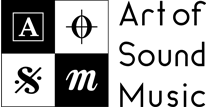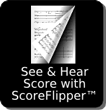Mahler Symphony No. 4 (Trumpet Parts)
| Arranger | Bishop, Andrew |
|---|---|
| Composer | Mahler, Gustav |
| Duration | 55 |
| Ensemble | Trumpet |
| Genre | Classical |
| Grade | 4 |
| Model Number | TSSP-MS04 |
| Category | Orchestral Trumpet Parts, Solo Trumpet |
This professionally re-engraved and transposed set of orchestral trumpet parts greatly eases learning and performance of the work. Available as PDF download or hard copy (9″ x 12″). You can buy the parts individually or as a package:
- Trumpet 1 in C
- Trumpet 2 in C
- Trumpet 3 in C
Notes from the Editor
Mahler’s Symphony No. 4 is not nearly as large in scope as his other symphonies, nor are the demands of the trumpet section as significant. The original parts, however, still suffer from many of the readability issues as all other editions of Mahler symphonies.
This new modern edition of the three trumpet parts of Mahler 4 has been prepared using the 1995 Critical Edition produced by the Internationale Gustav Mahler Gesellschaft and published by Universal Editions as source material. The follow updates have been implemented:
Double barlines at every meter change have been removed. Double barlines remain at key changes.
An updated set of cues, all appearing in concert pitch, and including more of the other trumpet parts as well as more appropriate instrument cues have been added.
Beaming has been updated to fit modern engraving best practices to time signatures.
One of the most persistent changes between the original edition and the 1995 C.E. was updating dynamic indications. Those have been retained for this edition.
A few minor note additions/changes happen in the Trumpet 2 part. In movement 3, bars 195-96, new material not existing in the original is present. Similarly, in bars 210-211 of the same part/movement, what used to be a2 with the Trumpet 1 part is now also new material.
All three trumpet parts now appear in concert pitch Trumpet in C, and all notes are spelled enharmonically correct.
A more spacious and relaxed layout of the music has been implemented.
The Andrew Bishop Orchestral Editions explore the concept of how these orchestral masterworks would appear if they were composed today. There are myriad differences in how music is currently published compared to when many of these works were originally engraved. “Tradition” is usually the (poor) excuse I hear when the topic of updating these masterworks is discussed – most often in reference to transposition(s). As a performer and teacher, I remain committed to the practice of honing vigorous transposition skills. However, there are many of these original engravings set in keys that are truly antiquated, and make almost no sense whatsoever to keep perpetuating. Transposition, however, is the least of the issues most of these original editions suffer from. Paper is no longer a premium and scarce product, and therefore the practice of cramming as much material on a page is not necessary. “Readability” was obviously not a concern with copyists of the times, and it is my opinion that the music suffered because of it. Therefore, a ”Bish Edish” (as they are popularly referred to) features many upgrades, including:
- Judicious spacing throughout the engraving (not too cramped, not too open)
- Correct enharmonic spellings of notes. This is an unfortunate byproduct of writing in asinine transpositions.
- A careful reconsidering of cue usage.
- Corrections of many inconsistencies between original parts and score, and even between parts themselves.
- The addition of measure numbers, including helpful ranges listed under multi-measure rests.
- Deleting key signatures and writing all parts utilizing accidentals only.
- All parts are formatted for standard Concert 9×12 paper, and is best printed on that size.
Reading it on 8.5×11 is not ideal, but the compression percentage isn’t too significant. Similarly, reading it off a larger tablet (e.g. iPad Pro) doesn’t present any significant issues.
In some instances, there are other upgrades specific to individual works that will be mentioned within the respective product. If you happen to find something questionable that you would like to bring to my attention, please feel free to do so at: trptshallsound@gmail.com. If it is something that I need to correct, I will be happy to do so and make sure you receive a corrected part/parts. If you have other works that you would like to have a custom edition made, please also reach out with that as well.
Andrew Bishop, Editor









